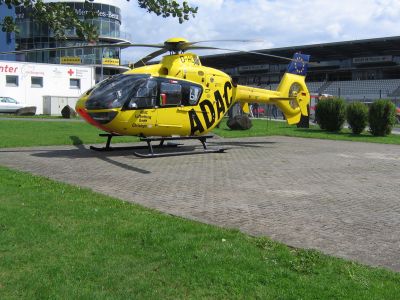Analysing helicopter flue gas

ADAC Helikopter Nürburgring
By Borussiafreialdenhoven (Own work) [Public domain], via Wikimedia Commons
The EU is dedicated to reducing emissions associated with air transport. The objective applies equally to rotorcraft as to aeroplanes, so first-time measurements and models of helicopter flue gas emissions are of fundamental importance to the efforts.
Commercial rotorcraft use is likely to increase significantly in the
coming years. Rotorcraft will act as shuttles between heliports and
airports, between cities without airports, or even connecting islands
with limited infrastructure to the mainland. In order to make helicopter
transport greener, the EU would like to identify and develop
eco-friendly flight paths. These paths should reduce fuel consumption —
directly related to carbon dioxide (CO2) emissions — and nitric oxide
family (NOx) emissions.
To identify the appropriate paths, scientists must first get a good handle on what exactly the flue emissions of a rotorcraft are during flight and under different conditions. With EU support of the project 'Methodologies and applications of emission measurements on rotorcraft' (MAEM-RO), they created a database of flue emissions produced by numerical models of a generic rotorcraft engine developed within the project. The results of the numerical codes were validated against extensive experimental results from flue gas emissions measurements on an Agusta Westland Pzl SW4 helicopter during several missions.
As the area of research is completely new, there is no existing standardisation in terms of best practices or data analysis techniques. Scientists used their extensive experience in flue gas measurements from stationary gas turbines to define the most appropriate measures and best practices related to measurements from aircraft engines.
Based on the guidelines, researchers obtained accurate measurements of carbon monoxide, CO2, NOx, total organic carbon and sulphur dioxide during flight tests. With this knowledge, they were able to contribute to a report outlining the optimisation of flight paths for reduced environmental impact.
MAEM-RO covered new territory in developing the flue gas measurement methodology and the way to integrate it into the unconventional helicopter setting to analyse pollutants in helicopter exhaust gases during flight. Air transport emits pollutants directly into the atmosphere rather than on the ground like power plants. This is sort of analogous to injecting a drug rather than taking it orally for potency and rapid activity. The methodologies should thus be a powerful tool within the aerospace community for determining the impact of flight on the atmosphere.
published: 2015-05-27

